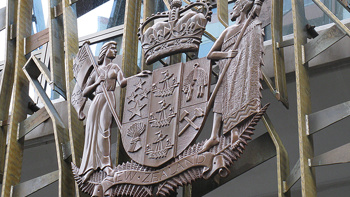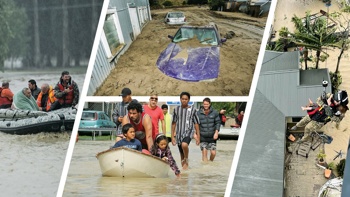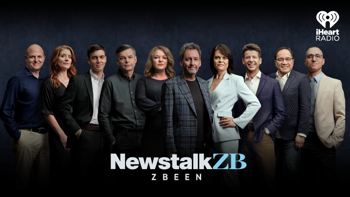Transport Minister Michael Wood appeared to dash any hope Central Government would come riding to the rescue of budget-constrained Auckland Council, by picking up a larger share of the project’s $1 billion cost blowout, announced this morning. Meanwhile, National warned that the CRL blowout is a taste of the cost increases to come if Auckland light rail gets the green light.
Wood reminded the Council that City Rail Link is a 50-50 partnership with Auckland Council, when asked about who would fund the latest $1 billion cost blowout on the project.
“That is just a point of fact: it’s a partnership that is 50-50 in terms of governance, in terms of costs,” Wood said.
The project, which will now cost $5.493b, has blown its budget twice now.
/cloudfront-ap-southeast-2.images.arcpublishing.com/nzme/2YALSM5Y7JAC6HBLVOG63X6YFM.jpg)
Inside the City Rail Link construction at Te Waihorotiu Station (Aotea). Photo / Sylvie Whinray
With Auckland Council facing immense budgetary pressure, there are questions about whether the Government will pick up a greater proportion of the bill.
Wood would not give a definitive answer to this, but repeatedly reinforced the nature of the CRL as a 50-50 partnership.
“The arrangement in terms of CRL across governance and costs is that it is a 50-50 partnership between Auckland Council and the Crown.
“Both parties do need to consider this information that’s come forward, but that is the arrangement that we have in place,” Wood said.
He said the CRL, which will create new underground rail stations in central Auckland, “is essential to Auckland’s development.
“We need a functional mass rapid transit system that doubles the capacity of the existing rail network. It’s the equivalent of 16 lanes of traffic coming into the central city,” he said.
The most recent cost estimate for the project was $4.4b, a $1b increase on the original $3.4b estimated cost of the project.
Wood said this first cost increase “wasn’t a blowout”.
“The first cost increase which came in a couple of years ago was because the previous government under-scoped the project and put platforms in that were too short,” Wood said.
“It wasn’t a blowout. It was the fact that our government was recognising that we need to do this properly,” Wood said.
/cloudfront-ap-southeast-2.images.arcpublishing.com/nzme/RBBNBLJZMZBXTDJ45WJL2E6WCI.jpg)
CRL chief executive officer Dr Sean Sweeney said the extra funding and additional completion time is primarily due to Covid impacts. Photo / Jed Bradley
He said that the second cost increase was “due to Covid-19″.
“[It] is not unique to the CRL project. Every significant horizontal and vertical infrastructure project in New Zealand virtually and around the world is facing those pressures at the moment,” Wood said.
“Suggesting that it’s a blowout suggests that the company and the people who are doing the work have done something wrong. I think we’re just dealing with the realities of a post-Covid environment we cost to increase,” he said.
National’s Transport Spokesman Simeon Brown said the cost blowout “should be causing alarm bells to be ringing for the cost of Labour’s Auckland light rail project.
“Auckland’s light rail is already projected to cost up to almost $30b on numbers estimated 18 months ago. The City Rail Link cost blowout suggests this figure could be much higher due to construction cost increases,” Brown said.
He said National would axe light rail and spend the money on rebuilding roads and bridges destroyed by the cyclone.
Green Party transport spokeswoman Julie Anne Genter said the project was “transformational and essential”.
“All big transport projects seem to be coming in higher than expected, so it’s not a surprise,” she said.
She found some common ground with Brown on the issue of light rail - although she wants the Government’s proposal pared back, rather than axed.
Genter said the CRL blowout “goes to show why the Government should go back to the original Auckland light rail proposal for a surface system like the wildly successful lines in Sydney, Canberra, and the Gold Coast”.
Auckland Mayor Wayne Brown on a tour of the Maungawhau Mt Eden City Rail Link CRL station during construction in November 2022. Picture / Supplied
Mayor Wayne Brown said the budget “blowout” is unsurprising.
CRL also provided the Crown and Auckland Council with a revised completion date for the project’s stations and supporting rail infrastructure of November 2025.
Following the end of the construction programme, CRL Ltd will hand over the completed infrastructure to KiwiRail and Auckland Transport, which will then carry out the additional work required to open the CRL to its first passengers.
CRL chief executive Dr Sean Sweeney said the extra funding and additional completion time is primarily due to Covid impacts – time lost on-site and the knock-on effect on the supply chain, resourcing, materials and labour costs.
“People need to remember that in Auckland we endured two level four lockdowns, a further 280 days of restricted working conditions [Covid traffic light system] and we lost 3.2 million hours through illness among staff, with 800-plus workers infected.
“The request for extra funding has not and will not delay continuing work on the project, which is progressing well.
“Together with our contractors Link Alliance, we have got through Covid and surmounted its impacts and are now well advanced in our work to build New Zealand’s first underground metro rail network.”
Take your Radio, Podcasts and Music with you

/cloudfront-ap-southeast-2.images.arcpublishing.com/nzme/Y62HPVP66BAC5EOZX4KOWETLW4.JPG)








